“ Philippine Tarsier … Living Still
At 45 Million Years “
“The Ultimate In Your Simple-To-Elegant Quest For The Queerest”
The Philippine Tarsier has been living the past 45 million years. It is the ultimate answer to YOUR simple-to-elegant quest for the queerest at the most reasonable cost.
It is the most enduring among the symbols of the Philippine Islands along with the bahay kubo, Philippine eagle, and the carabao.
Here are some short outlines…
Profiling The Philippine Tarsier
Amazing History
Tarsiers have inhabited rainforests worldwide the past 45 million years… now they only exist in the Philippines, Indonesia and Malaysia.
There are 8 tarsier types… the Philippine tarsier is the oldest and most mysterious. It is one of the oldest land species continuously living in the Philippines.
They were abundant in Bohol Philippines during the 60s. They were endangered in 1986-2011 when there were only an estimated 5,000-10,000 of them left nation-wide.
These guys have a 25-year life span only, but their specie is now perpetuating beyond 45 million years…
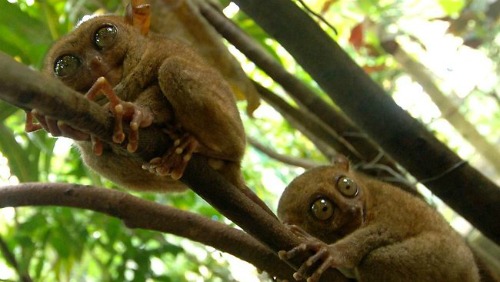 Source: Google Images
Source: Google Images
The Situation At HandScientists say the Philippine tarsier (tarsius syrichta) is the world’s smallest haplorrhine (monkey-primate in between). It is called Maomag in the Cebuano tongue.
It’s endemic to the Philippines… facing extinction if disregarded. It populates the Philippine islands of Bohol, Samar, Leyte, and Mindanao.
Lately, tarsiers were found in South Cotabato and Zamboanga City… Zamboanga’s are bigger reports say.
There’s good news! The primates are no longer critically endangered according to tour officials at the Tarsier Conservation Area in Loboc, Bohol late in 2011.
Here’s the primate’s geo-distribution (blue)…
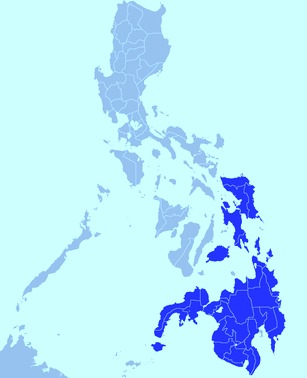
Source: Google Images
Perplexing Body FeaturesThe primate has fixed, oversized eyes… thus, the mammal with the biggest eyes. Its head turns 180 degrees like an owl. Its ears arch unusually wide.
It’s monkey-looking. Its rat-like in size… has long, bald tail thrice its body length used for balance. It has gray to dark brown thick, silky fur.
It has claws rather than finger nails… unusual for primates. Its long digits are tipped with adhesive, rounded pads to let it cling easily to trees and grip almost any surface.
The Threats To Their Existence
Deforestation threatens the most… it eliminates the primate’s natural habitat, the forest.
Hunting for the pet market is next. A tarsier fetches P6,000 ($140) in the black market in Manila. And…
Irresponsible tourism - tour operators keep primates in cages… primates suicide by banging their heads on the grills.
Bewildering Characteristics
A shy nocturnal insectivore… consumes 17 hoppers or five lizards a day. Doesn’t feed on dead animals. Licks on charcoal to obtain salt.
In the wild, it is very defensive and it bites… it appears docile and tame only because it’s weak.
Arboreal… it needs trees for home and environment. Vertical clinger and leaper… can leap at 6 meters for its size. It also precision jumps backward. Does not move aground.
The ‘balete’ (banyan) is its choice tree. The cavities formed by the stranggling fig and the host tree are its hotel rooms.
Here’s a sample balete…
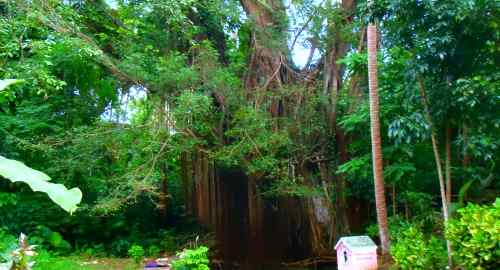 Source: Google Images
Source: Google Images
Tarsiers breed twice a year as mating season begins in April-May. The male "plugs" the female’s vagina after intercourse. Gestation is six months. One birth, one tarsier.
A baby tarsier climbs after 2 days, and jumps after four. It’s mature after 19 days.
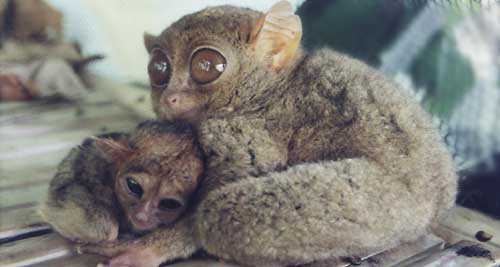 Source: Wikipedia
Source: Wikipedia
Confounding HabitatLives in both secondary and primary forest at sea level to 700 meters elevation. It has a home range of 16 male and 41 female tarsiers per 100 hectares. The male is territorial.
Both male and female tarsiers are solitary… they cross each other's path during the night while hunting. They travel 1.5 kilometers across the forest covering 6 hectares.
Importance To Humans And The Ecosystem
In their habitat, they don’t affect humans. As pets, they may spread worms and other parasites to their human owners.
Scientists study their unique taxonomic position to aid human economies and add to the body of knowledge about life.
The Must Do Conservation Drive
In 1986-2000, the International Union for Conservation of Nature (IUCN) labeled the Philippine tarsier ‘endangered’, then red listed it.
In 1997, President Fidel Ramos declared the primate a specially protected faunal species… saying among others, that it is a national concern forming part of the Philippine heritage.
The timely intervention of government and some well-meaning people of Bohol, has mitigated the situation. Today, the tiny primate has become a landmark of Philippine tourism.
It propelled Wow Philippines to greater heights. More foreigners undertake Philippines travel, go to Bohol and see Philippine tarsier… then head for the Chocolate Hills.
The Philippine Tarsier Foundation
In 1996, the NGO Philippine Tarsier Foundation was formed by some prominent Boholanos in Tagbilaran City, Bohol, Philippines. It heeded the call to implement the government’s Philippine Tarsier conservation program.
The foundation has now a 167-hectare tarsier sanctuary in the towns of Corella, Sikatuna and Loboc serving as natural habitat for the primates. It undertakes tarsier research, habitat management, community management, and visitor supervision.
It also established a 15-kilometer Tarsier Trail inside the sanctuary running through the municipalities of Loboc, Sikatuna and Corella. You can trek the trail and see a wide diversity of flora and fauna.
The sanctuary also hosts camping, picnicking, bird watching, or other ecological tour activities. It is now earning P50,000 daily… largely from Tarsier Watching.
Here’s the foundation’s research and development center…
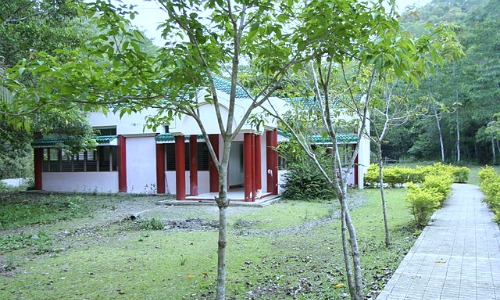 Source: Wikipedia
Source: Wikipedia
The Tarsier ManThis man is Carlito Pizarras, field manager of Philippine Tarsier Foundation. His pioneering dedication to conserve the primate landed his name in scientific literatures when the new Tarsier genus “Carlito” was named after him.
He hunted tarsiers for a living before. He knows the primate more than anyone else in the country… he’s a mere high school graduate. He is the first to have bred tarsiers in-country… in his backyard long before anyone else did.
Here’s the man…
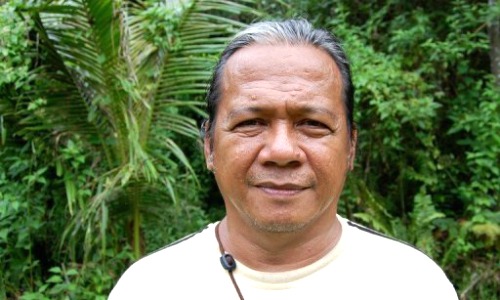
For now…
Summing Up
The Philippine Tarsier specie has been living the past 45 million years. YOU can visit it at the Philippine Tarsier Foundation in Bohol Philippines.
It’s the ultimate answer to your simple-to-elegant quest for the queerest at the most reasonable cost.
It is the most enduring among the symbols of the Philippine Islands… the others are the bahay kubo, Philippine eagle, and the carabao.
It has immensely helped Bohol's reputation as one of the Philippines’ top 10 travel destinations… and increasingly among the world’s best.
If you are convinced, decide, come and take your Bohol Philippines vacation.
Back to top of this page
Return from Philippine Tarsier to Philippine Islands
Return from Philippine Tarsier to Top Destination Choice The Philippines Home Page